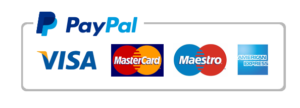Read Case Study and submit APA Paper.
Instructions: Read CASE STUDY: BEWARE: One Emergency May Hide Another! and submit APA Paper, write a paper addressing the following:
a. Which nursing standards were violated in this case study?
b. What could have been done to avoid the problem?
Paper must be at least 1 page, excluding title page and reference page. (at least 1 reference no more than 5 years old), make sure to reference the article.
CASE STUDY—BEWARE: One Emergency May Hide Another!
A hospital submitted a report to the State Board of Nursing reporting that an RN had been terminated after the death of a patient following surgery for a tubal pregnancy.
THE NURSE’S STORY—SALLY SIMMS, RN
I had worked the medical-surgical units at the General Hospital ever since graduating from my nursing program 4 years before. This was the worst night, the worst shift, of my nursing career.
I was assigned to care for eight patients that night, which is not an unusual number of patients, but they all were either fresh post-ops or so very sick. Four patients had just had surgery that day. One patient was on a dopamine drip to maintain his blood pressure, so he needed frequent monitoring. One patient was suspected to have meningitis, one patient had pneumonia, and a patient with suspected histoplasmosis completed my assignment.
One of my post-op patients was Betty Smith, a young woman in her early thirties who had laparoscopic surgery late in the day. She had been transferred from the recovery room late in the evening shift and was very uncomfortable when I first made my rounds. At 12:05 am, I called Betty’s physician because she was vomiting and thrashing in bed. Per his order, I medicated the patient with Phenergan.
The next time I checked on Betty, she seemed to be more comfortable, but I realized that her IV had infiltrated. I was really overwhelmed with meeting the needs of all my patients, so I asked Joan Jones, the charge nurse, to restart Betty’s IV. It was about 2:00 am when Nurse Joan restarted the IV.
I had been able to pretty much stay on top of everything at that point in the shift, and by 2:30 am I had assessed all my patients, given pain medications, and called four physicians to update them regarding their patients and for various orders. I thought things were settling down. I thought wrong.
Mrs. Holmes, the patient with histoplasmosis, seemed a bit off from when I had cared for her the previous two nights. Mrs. Holmes’ vital signs were unstable and her O2 saturation was only 80%. I notified her physician and he ordered stat arterial blood gases. The lab called with the results, and they were alarming. Mrs. Homes was losing ground, and her physician ordered us to transfer her to the ICU. I was preoccupied with accomplishing the transfer and accompanied Mrs. Holmes to the unit. I returned from the ICU at about 3:50 am.
On my return, I first checked the patient who was on dopamine, medicated another patient for pain, and did visual checks on the rest of the patients who all seemed to be sleeping. I began my charting.
At 6:05 am, I went to start IV antibiotics on Betty’s roommate, and to my horror discovered Betty was not breathing. I called the code. The first time I discovered that Betty had had a low blood pressure and elevated pulse was when I checked the vital signs sheet when the ER physician (who responded to the code) asked how Betty’s vital signs had been during the shift. The nurse’s aide who was assigned to monitor Betty had not informed me, and I had not checked the vital signs sheet.
It was such a terrible night; I was so busy with the transfer and caring for the other patients. Betty just had an outpatient procedure; if she had been earlier on the surgical schedule, they would have sent her home. I did not physically check her vital signs, and the aide did not report the elevated pulse and low blood pressure. I depended on the aide—my mistake. I know I was responsible.
I was terminated from employment and reported to the board of nursing. I have taken myself out of nursing; something died in me when I found my patient.
EMPLOYMENT EVALUATIONS
An evaluation conducted a few weeks before the incident showed mostly good ratings (11) with three excellent ratings. The hospital would consider reemployment if Ms. Simms improved her critical thinking skills.
PATIENT MEDICAL RECORD
Surgery Notes—Laparoscopy to remove unruptured ectopic pregnancy from distal portion of the fimbriae with estimated blood loss of 150 cc, three references to homeostasis, two references to cautery, patient “… to recovery room in excellent condition.”
Recovery Room Nurse’s Notes—In recovery 2110 to 2300, initial post-op flow sheet noted at 2210 BP 124/74, pulse 94; at 2225 BP 123/65; at 2240 BP 107/85, pulse 123. Assessment signed at 2220 “abdomen distended with few faint bowel sounds … patient shivering, c/o [complained of] abdominal pain, medicated ×3 [three times] with IVP Demerol, total of 50 mg. Patient awake, three dressings dry. No c/o N/V/D.” [No complaints of nausea, vomiting or diarrhea.]
Medication Record—Patient received Demerol 50 mg. with 25 mg Phenergan IM at 2215 and 0200.
Cardiopulmonary Resuscitation Record—Compressions noted at 6:08 am. [RN had initiated code at 5:55 am], MD arrived at 6:15 am, patient intubated at 6:20 am, patient administered atropine ×3, Eppy [epinephrine] ×5 [five times], bicarbonate [of sodium] ×2 [two times]. Pacemaker never captured. Patient never had return of spontaneous pulses and pronounced dead at 6:38 am.
Death Certificate—Immediate cause of death was hemoperitoneum due to postoperative hemorrhage of placental tissues after salpingotomy for a right tubal ectopic pregnancy.
BOARD ACTION
Ms. Simms entered into a consent agreement with the board of nursing, admitting that her conduct constituted a failure to practice in accordance with acceptable and prevailing standards of safe nursing care. Nursing standards cited were failure to assess and document the health status of the patient, failure to provide ongoing patient monitoring, and failure to communicate appropriately with members of the health care team.
Ms. Simms’ license was probated with stayed suspension for 2 years, with requirements for successful completion of ordered education including an advanced assessment course at an educational/collegiate institution, continuing education hours in risk management/legal issues in nursing (in addition to continuing education hours required for license renewal). Order noted RN’s voluntary evaluation by a mental health care professional and her compliance with all aspects of the treatment plan. Other terms included quarterly reports from nursing employer and self-reports. Ms. Simms was required to appear in person (as requested) for an interview with the Board or a board-designated representative.
COMMENTARY
This case example illustrates a cascade of clinical events that caused errors in clinical judgment, all of which are related to work overload and consequent lack of surveillance and monitoring of the patient. Nurse Simms made faulty assumptions that the young patient with a tubal pregnancy was her least acute patient. Of course the patient is the primary victim, but Nurse Simms also suffered greatly from this tragic incident, which was precipitated by a collection of untoward events and work overload.


